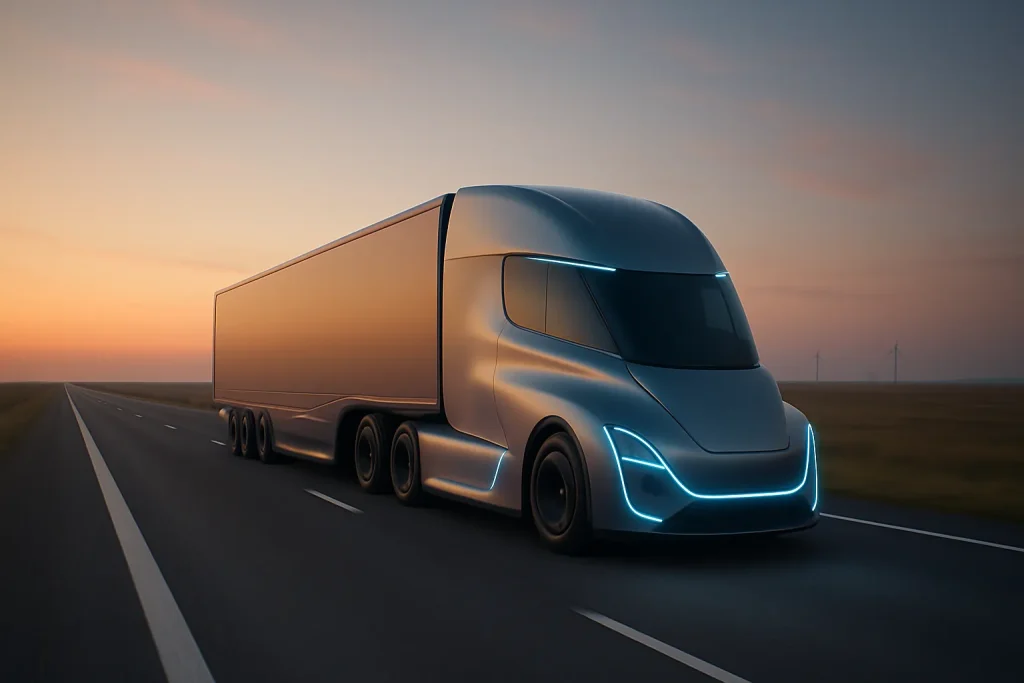Autonomous vehicles are poised to revolutionize the freight industry, promising increased efficiency and round-the-clock operations. This article examines the potential impact of self-driving trucks on the future of logistics, drawing on insights from industry experts. From addressing driver shortages to concerns about job displacement, the shift towards automated freight transport presents both opportunities and challenges for the sector.
- Human Touch Crucial in Autonomous Trucking
- Trust Issues Hinder Autonomous Freight Adoption
- Driver Shortages Addressed by Self-Driving Trucks
- Autonomous Trucks Threaten Driver Employment
- Proof of Performance Key for Automated Logistics
- Fuel Efficiency Gains vs Technical Reliability Concerns
- 24/7 Operations Improve Long-Haul Efficiency
- Nonstop Transit Boosts Supply Chain Efficiency
Human Touch Crucial in Autonomous Trucking
When people talk about autonomous trucks, the first thing that comes to mind is efficiency, but for me, the aspect I think gets overlooked is what happens in the gaps.
I don’t just mean gaps in technology; I mean the human gaps. Because, let’s be honest, in long-haul freight, drivers aren’t just sitting behind the wheel. They’re checking loads, making judgment calls at docks, spotting issues with trailers, dealing with road closures, construction, and sometimes just helping a customer who isn’t ready when they show up.
The drawback I see is that a machine may be able to drive a straight line for 500 miles, but it’s not wired for the messy, unpredictable situations that happen at the endpoints of a delivery. And right now, that’s where a lot of value is still created.
Unless we redesign the entire freight system (every dock, every stop, every interaction), we’re still going to need someone who can get out of the cab and solve problems.
I’m not against automation. I think there’s real potential in using it to support drivers, extend their hours, reduce fatigue, or handle repetitive highway stretches. But full autonomy in long-haul isn’t just a tech problem; it’s also a human handoff problem. And in my experience, that’s the part that’s hardest to automate.
 Ford Smith
Ford Smith
Founder & CEO, A1 Xpress
Trust Issues Hinder Autonomous Freight Adoption
I track freight trends closely, and autonomous vehicles are the industry’s double-edged sword. One massive benefit is their ability to offset the driver shortage that’s hitting crisis levels — over 80,000 drivers short in the U.S. alone, per the American Trucking Associations. Automation could stabilize long-haul routes, reduce labor costs, and lower accident rates tied to fatigue. From a logistics standpoint, that’s a goldmine. But here’s the overlooked drawback: trust. Clients moving their life’s belongings don’t want a robot behind the wheel. And in local freight, where customer interaction matters, autonomy could kill brand equity.
We’ve seen this firsthand. A pilot program in Nevada offered autonomous freight transfer for B2B cargo. Local reviews were harsh. Consumers weren’t ready to accept machines with no accountability if something went wrong. And let’s not forget infrastructure: less than 10% of U.S. roads are AV-compatible, per the DOT. The tech is impressive. But in an industry built on reliability, perception matters just as much as performance. Until trust catches up with innovation, the road to full autonomy will remain longer than Silicon Valley thinks.
 Bretton Auerbach
Bretton Auerbach
CEO, LocalMovers
Driver Shortages Addressed by Self-Driving Trucks
Autonomous vehicles have strong potential to transform long-haul trucking and freight transportation, particularly through cost reduction and operational efficiency. The long-haul segment, with its repetitive routes and highway-dominant driving patterns, is especially well-suited to automation. This model can operate continuously, bypassing human limitations like rest requirements, and is forecast to cut operating costs by up to 45% per mile.
A major benefit is the alleviation of chronic driver shortages. The U.S. and Europe are facing projected deficits of hundreds of thousands of drivers by 2030. Autonomous trucks could fill this gap, ensuring freight keeps moving without being constrained by labour shortages. This stabilises supply chains, supports just-in-time logistics, and helps freight operators scale sustainably.
However, a significant drawback is public trust and regulatory fragmentation. Surveys show that people remain sceptical of fully driverless trucks, and the legal landscape — especially in the U.S. — is fragmented at the state level. Without a harmonised national or international framework, deployment could be slow and uneven, potentially widening regional disparities in freight costs and technology access.
 Simon Poole
Simon Poole
Operations Director, Barrington Freight
Autonomous Trucks Threaten Driver Employment
A self-driving truck can save the industry a lot of money by making long-haul trucking less expensive. The machines will be able to transport cargo in an almost continuous process, thus eliminating the need to stop between trips. They are also capable of enhancing safety by reducing human errors caused by fatigue or distraction.
However, a significant limitation is that it will threaten massive unemployment for truck drivers. While the technology may help address the present driver shortage in the short term, over the long run, it will cause unemployment as more people are displaced by the technology.
To prevent negative social and economic impacts, it is valuable to have policies that promote retraining and create new job opportunities in the emerging industry.
 Aryan Bhardwaj
Aryan Bhardwaj
Owner, Spartan Quip
Proof of Performance Key for Automated Logistics
There is massive potential for autonomous vehicles to help close the growing driver shortage. As freight demand increases, this shift feels less like a convenience and more like a necessary step forward. It offers a practical solution to many industries facing serious logistics bottlenecks. However, trust must be earned. Without proof, companies will not immediately hand over high-value or fragile cargo to automated systems.
They expect clear evidence that these systems can consistently match or exceed human performance. Safety, reliability, and accountability remain key factors here. Until those standards are met with transparency and precision, businesses will remain cautious. The opportunity is real, but confidence in the technology must be built gradually and responsibly.
 Ender Korkmaz
Ender Korkmaz
CEO, Heat&Cool
Fuel Efficiency Gains vs Technical Reliability Concerns
Autonomous freight vehicles hold strong potential, particularly for long-haul routes where precision and consistency drive value. One significant advantage is fuel efficiency. These systems manage acceleration, braking, and routing with high accuracy and reduce unnecessary fuel consumption. Over time, this can lead to lower operational costs and fewer emissions, offering both economic and environmental gains.
However, technical reliability remains a key concern. A software failure in a remote area could result in prolonged downtime, unlike a human driver who can often troubleshoot or seek help quickly. Even brief disruptions can cause delays that ripple through supply chains. Until there are dependable support systems in place to manage such incidents, full-scale deployment will face meaningful resistance.
 Ivan Rodimushkin
Ivan Rodimushkin
Founder, CEO, XS Supply
24/7 Operations Improve Long-Haul Efficiency
In freight transportation, autonomous vehicles have the potential to significantly improve long-haul efficiency by reducing driver fatigue and allowing companies to operate around the clock. This could shorten delivery times and stabilize supply chains.
However, because this is such a new area, the technology will only deliver its full value once infrastructure and safety regulations catch up. The future is promising, but it might take time for this new development to reach its full potential.
 Nicholas Gibson
Nicholas Gibson
Marketing Director, Prime Ship
Nonstop Transit Boosts Supply Chain Efficiency
I see autonomous vehicles as a transformative force in long-haul trucking. One clear benefit is their potential to dramatically reduce transit times by operating around the clock without mandatory rest breaks. This could increase efficiency and lower costs across the supply chain. However, widespread adoption will hinge on solving regulatory, safety, and infrastructure challenges, especially in unpredictable, real-world conditions.
 Robert Khachatryan
Robert Khachatryan
CEO and Founder, Freight Right Global Logistics







